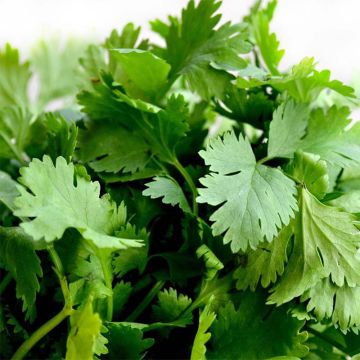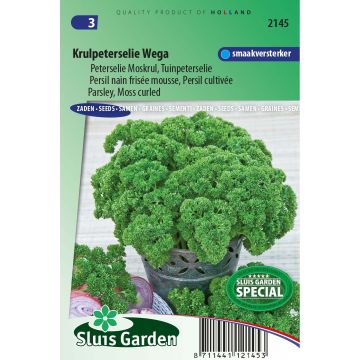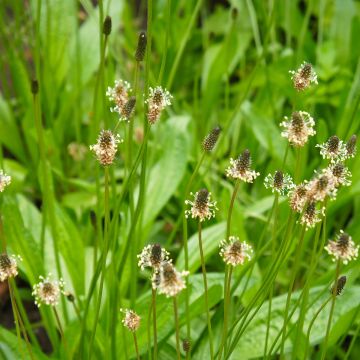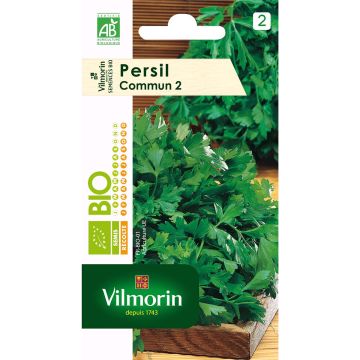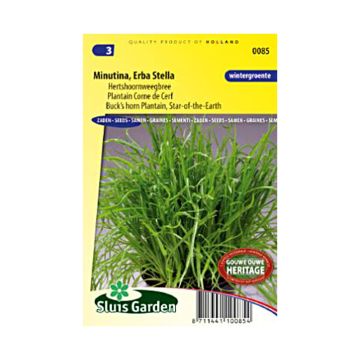

Ciboule commune rouge - Vilmorin
Red Scallion - Vilmorin Seeds
Allium fistulosum
Bunching onion
Hello, I have received my order. Thank you. Regards, Ligault.
Robert, 17/04/2023
Special offer!
Receive a €20 voucher for any order over €90 (excluding delivery costs, credit notes, and plastic-free options)!
1- Add your favorite plants to your cart.
2- Once you have reached €90, confirm your order (you can even choose the delivery date!).
3- As soon as your order is shipped, you will receive an email containing your voucher code, valid for 3 months (90 days).
Your voucher is unique and can only be used once, for any order with a minimum value of €20, excluding delivery costs.
Can be combined with other current offers, non-divisible and non-refundable.
Why not try an alternative variety in stock?
View all →This plant carries a 6 months recovery warranty
More information
We guarantee the quality of our plants for a full growing cycle, and will replace at our expense any plant that fails to recover under normal climatic and planting conditions.

Description
Red scallions are 30 cm high perennial plants that are both cold-resistant and productive. Often grown biennially, they produce long, slender stems with green leaves and a burgundy red, slightly swollen base. Deliciously mild, sweet flavour! Sow from March to July and harvest from June to October.
Scallions, also known as green onions or bunching onions, are a tasty perennial vegetable. They belong to the Allium family, along with garlic, onion, shallot and chives. Like chives, they form clumps of fine, hollow cylindrical stalks (scapes) and leaves. They are generally grown for two to three years, after which they become less productive and need to be divided. In regions with milder winters, it is possible to harvest the leaves all year round. When left to go to flower, scallions produce pretty white pompoms that hover over the leaves. Both leaves and stems are delicious finely chopped and served with omelettes, quiches and fish dishes. Scallions are rich in antioxidants, minerals and vitamin B.
Harvesting: scallions can be harvested at all growth stages, from June to October, about 3 months after sowing. Either snip off a few leaves with scissors or harvest the whole stem.
Conservation: scallions can be kept for a few days in the refrigerator or for a few months when dried or frozen. Nevertheless, for a fuller aroma they are definitely best eaten fresh!
Good to know: We recommend mulching as this reduces the need to water and weed your plants. Growing scallions alongside carrots will protect the latter from carrot fly. However, avoid growing them too close to vegetables belonging to the Fabaceae family (beans, peas, broad beans).
Even if the vegetable garden is first and foremost a place for growing great quality veg, it’s always a good idea to leave a bit of room for flowers. Growing flowers alongside your vegetable plants will make your general gardening experience more enjoyable and is a great way to attract pollinators and repel garden pests! Flowers such as gaillardia, marigolds, zinnias, cosmos or nasturtiums can be sown in and around the rows of vegetables. Herbs such as dill can be very useful also. Bear in mind that some companion plants self-seed easily and can be a bit invasive (borage, chives, lemon balm etc.)
Report an error about the product description
Harvest
Plant habit
Foliage
Botanical data
Allium
fistulosum
Liliaceae
Bunching onion
Cultivar or hybrid
Biennial
Other Herb seeds
View all →Planting and care
Sowing:
The germination of Ciboule occurs at a temperature of around 15°C. It takes about 18 days for the seeds to sprout.
Sowing can be done indoors or directly in the ground from early March to July:
Indoors, in a container with drainage holes filled with a special seed compost, sow the seeds at a depth of 1 cm, spacing them 5 to 7 cm apart. Water with a very fine spray. Once the young plants reach the size of a pen, they can be planted in the garden (30 cm between rows).
Direct sowing in the ground is done later, in well-warmed soil, usually around mid-May, following the same method as indoor sowing. Leave 30 cm between rows. When the plants have 5 to 6 leaves, thin them out, leaving one plant every 15 to 20 cm. Keep the soil slightly moist.
Ciboule can also be grown in pots.
Cultivating Ciboule:
Ciboule thrives in full sun or partial shade, in moist and moderately fertile soil. If compost is needed, it should be applied preferably in autumn, in the form of well-rotted compost, by lightly scratching the soil to a depth of 5 cm, after loosening the soil as for any vegetable crop. Ciboule produces beautiful white flowers, but it is recommended to cut the stalks before they flower to preserve the flavor of the leaves.
Seedlings
Care
Intended location
-
, onOrder confirmed
Reply from on Promesse de fleurs
Similar products
Haven't found what you were looking for?
Hardiness is the lowest winter temperature a plant can endure without suffering serious damage or even dying. However, hardiness is affected by location (a sheltered area, such as a patio), protection (winter cover) and soil type (hardiness is improved by well-drained soil).

Photo Sharing Terms & Conditions
In order to encourage gardeners to interact and share their experiences, Promesse de fleurs offers various media enabling content to be uploaded onto its Site - in particular via the ‘Photo sharing’ module.
The User agrees to refrain from:
- Posting any content that is illegal, prejudicial, insulting, racist, inciteful to hatred, revisionist, contrary to public decency, that infringes on privacy or on the privacy rights of third parties, in particular the publicity rights of persons and goods, intellectual property rights, or the right to privacy.
- Submitting content on behalf of a third party;
- Impersonate the identity of a third party and/or publish any personal information about a third party;
In general, the User undertakes to refrain from any unethical behaviour.
All Content (in particular text, comments, files, images, photos, videos, creative works, etc.), which may be subject to property or intellectual property rights, image or other private rights, shall remain the property of the User, subject to the limited rights granted by the terms of the licence granted by Promesse de fleurs as stated below. Users are at liberty to publish or not to publish such Content on the Site, notably via the ‘Photo Sharing’ facility, and accept that this Content shall be made public and freely accessible, notably on the Internet.
Users further acknowledge, undertake to have ,and guarantee that they hold all necessary rights and permissions to publish such material on the Site, in particular with regard to the legislation in force pertaining to any privacy, property, intellectual property, image, or contractual rights, or rights of any other nature. By publishing such Content on the Site, Users acknowledge accepting full liability as publishers of the Content within the meaning of the law, and grant Promesse de fleurs, free of charge, an inclusive, worldwide licence for the said Content for the entire duration of its publication, including all reproduction, representation, up/downloading, displaying, performing, transmission, and storage rights.
Users also grant permission for their name to be linked to the Content and accept that this link may not always be made available.
By engaging in posting material, Users consent to their Content becoming automatically accessible on the Internet, in particular on other sites and/or blogs and/or web pages of the Promesse de fleurs site, including in particular social pages and the Promesse de fleurs catalogue.
Users may secure the removal of entrusted content free of charge by issuing a simple request via our contact form.
The flowering period indicated on our website applies to countries and regions located in USDA zone 8 (France, the United Kingdom, Ireland, the Netherlands, etc.)
It will vary according to where you live:
- In zones 9 to 10 (Italy, Spain, Greece, etc.), flowering will occur about 2 to 4 weeks earlier.
- In zones 6 to 7 (Germany, Poland, Slovenia, and lower mountainous regions), flowering will be delayed by 2 to 3 weeks.
- In zone 5 (Central Europe, Scandinavia), blooming will be delayed by 3 to 5 weeks.
In temperate climates, pruning of spring-flowering shrubs (forsythia, spireas, etc.) should be done just after flowering.
Pruning of summer-flowering shrubs (Indian Lilac, Perovskia, etc.) can be done in winter or spring.
In cold regions as well as with frost-sensitive plants, avoid pruning too early when severe frosts may still occur.
The planting period indicated on our website applies to countries and regions located in USDA zone 8 (France, United Kingdom, Ireland, Netherlands).
It will vary according to where you live:
- In Mediterranean zones (Marseille, Madrid, Milan, etc.), autumn and winter are the best planting periods.
- In continental zones (Strasbourg, Munich, Vienna, etc.), delay planting by 2 to 3 weeks in spring and bring it forward by 2 to 4 weeks in autumn.
- In mountainous regions (the Alps, Pyrenees, Carpathians, etc.), it is best to plant in late spring (May-June) or late summer (August-September).
The harvesting period indicated on our website applies to countries and regions in USDA zone 8 (France, England, Ireland, the Netherlands).
In colder areas (Scandinavia, Poland, Austria...) fruit and vegetable harvests are likely to be delayed by 3-4 weeks.
In warmer areas (Italy, Spain, Greece, etc.), harvesting will probably take place earlier, depending on weather conditions.
The sowing periods indicated on our website apply to countries and regions within USDA Zone 8 (France, UK, Ireland, Netherlands).
In colder areas (Scandinavia, Poland, Austria...), delay any outdoor sowing by 3-4 weeks, or sow under glass.
In warmer climes (Italy, Spain, Greece, etc.), bring outdoor sowing forward by a few weeks.


































